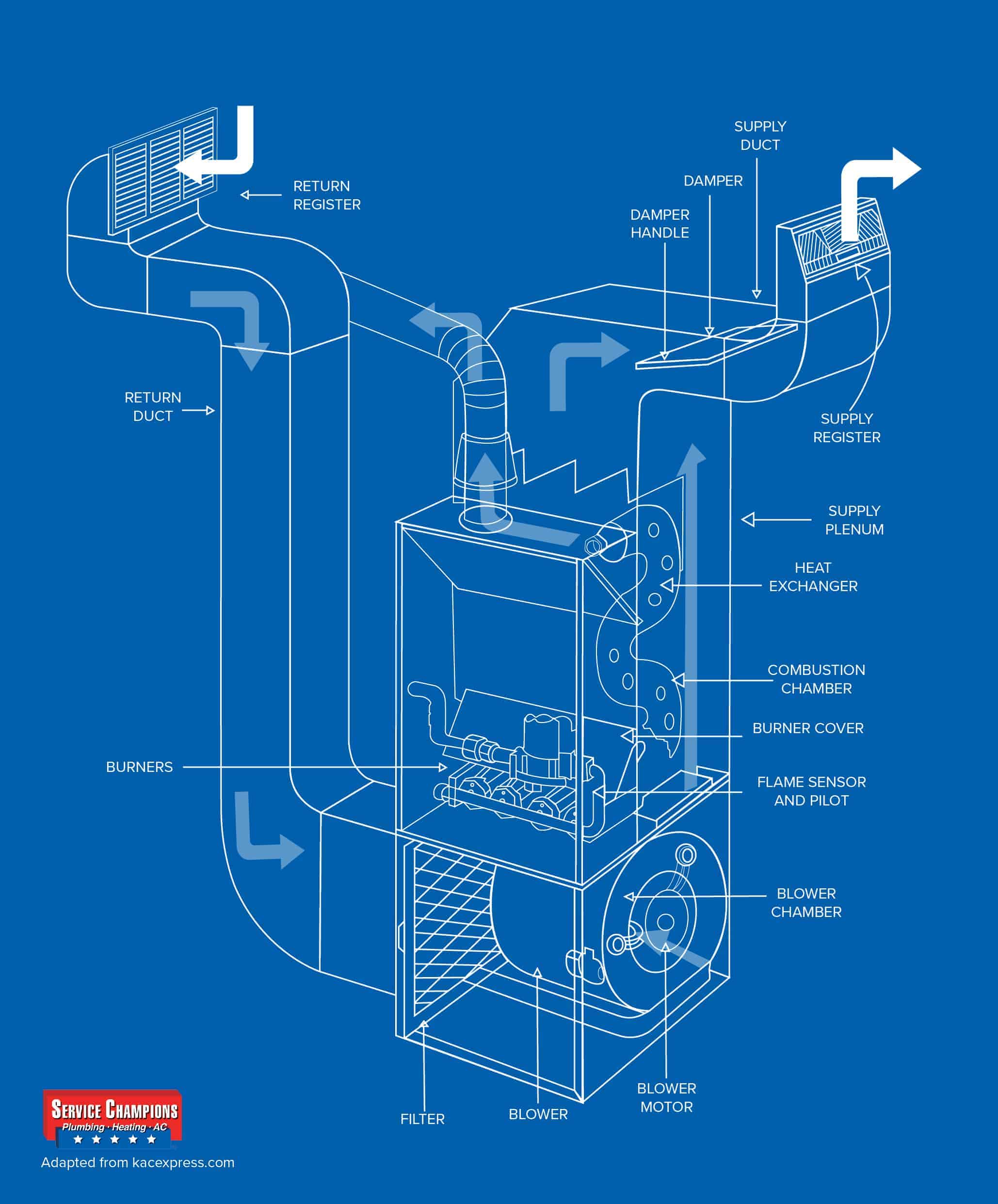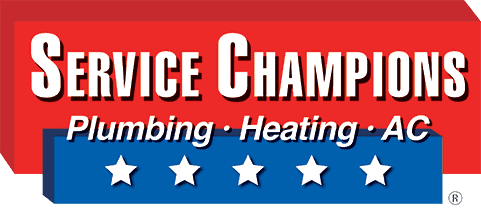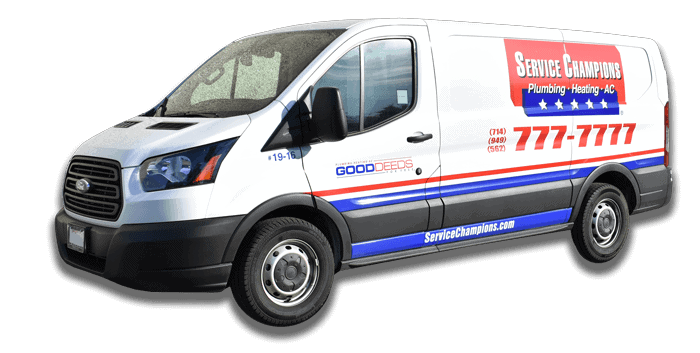Anatomy of a Furnace – What Are All the Parts of a Furnace?
Most homeowners don’t care about their furnace until it stops working. We get it, it provides a pivotal service but can be hidden away in the attic or garage. At Service Champions, we like to tout the importance of routine furnace tune-ups, but what if you’re interested in the furnace itself? How it works and what the pieces do. That’s why we put together this handy guide to fall the parts of a furnace.
Parts of a Home Furnace
Return Register
- Return registers look like normal air vents. They’re usually located in the hallway or in a ceiling—anywhere cold air can live. A return register will pull cold air from inside your home and send it to your HVAC system to be warmed. This is the first step in the heating process, it’s also how air is recycled through your home.
Return Duct
- Return ducts are an incredibly important part of your heating and cooling system. The air that’s sucked up by the return register needs to be directed somewhere; and that’s the job of the return duct. This duct directs the air from the register and sends it directly to your furnace.
Air Filter
- We talk a lot about HVAC air filters. They are a small part of your HVAC system, but have a tremendous impact on the health and safety of everyone in your home. When ambient air is brought in through the return register and duct, it then passes through the air filter. The air filter will trap indoor air contaminates or pollution and stop them from being redistributed through your home.
Blower
- The blower’s job is pretty self-explanatory. It is a large component that blows air through your HVAC system and into the supply ductwork. Air can be sucked into the system, but without a blower it has nowhere to go.
Blower Motor
- The blower itself is powered by a blower motor. The blower itself is outfitted with a fan, and the blower motor spins said fan. Without the blower motor, treated air wouldn’t make it too far out of the system. All fans need some power.
Blower Chamber
- The blower chamber is the box that houses the blower and blower motor. The box helps stabilize the blower, and all other components, and ensures everything works properly.
Burners
- This is where the magic truly happens. The burners are where the fire comes from. Most furnaces are powered by natural gas. The burners pull natural gas from a gas line this is where gas meets oxygen and makes fire. Of course, there is a flame sensor to make sure everything is working properly, as well as a pilot light or electronic ignition to spark the fire.
Flame Sensor
- The flame sensor is a small rod that plays a big role for your HVAC and home safety. The flame sensor detects when a fire is actually lit in the burner chamber. The flame sensor will essentially do nothing when everything is working properly. It’ll “keep calm and carry on.” However, the flame sensor will shut the system down when there’s no heat. It does this to avoid any potential gas leaks. Your family could face carbon monoxide issues when the heater is emitting gas without a flame.
Pilot Light or Electronic Ignition
- Pilot lights and electronic ignitions are essentially the same thing, but with different safety levels. Older furnaces will still have a pilot light. Newer furnaces—about 10-years-old and up, will have an electronic ignition.Pilot lights are made to be constantly running, even if the furnace is off. The theory is that the furnace will always be ready when a heating cycle is turned on. The pilot light presents a few issues. First, it’s always using gas which can add up over time. And second, the pilot light is easily blown out by a draft. This forces you to relight the pilot light which is annoying and potentially dangerous. That’s why new furnaces have an electronic ignition.
- An electronic ignition is the updated version of a pilot light. Your HVAC system will send a signal to the electronic ignition whenever your home is ready for heat. The electronic ignition receives the signal and sends a spark to the burner.
Burner Cover
- A burner cover sits over the burners, flame sensor, blower chamber, and electronic ignition or pilot light. It is a safety measure that keeps the flames inside the furnace. It’s usually a small, rectangle piece of metal that’s just above the burners.
Combustion Chamber
- The combustion chamber is what holds the entire fire system in place. It’s a chamber specifically for the burners, flame sensor, flames, and pilot light or electric ignition. The combustion chamber is separate from the blower chamber for safety reasons.
Heat Exchanger
- The heat exchanger is how you get safe, healthy, and warm air in your home. Natural gases and fire are burned together to create heat. This mixture generates a level of “combustion gasses” which can be harmful to human health. The hot combustion gasses are sent inside the heat exchanger. This combustion gas warms the walls of the heat exchanger so much that heat transfers to filtered air flowing outside the walls of the exchanger.After warmth is transferred to the filtered air, remaining combustion gasses inside the exchanger are sent into the flu pipe. This process keeps any harmful gasses from entering your treated airstream.
Supply Plenum
- Remember the return duct we talked about at the beginning of this piece? After air is returned to the HVAC system it is then supplied to the home. The supply plenum receives heat treated air from the heat exchanger and prepares to send that all back into your home.
Damper
- The damper regulates the amount of air that is released into your home. All the treated air is put into the damper. Then, the damper decides how much air goes where. You can control how much air comes out the damper by changing settings on your thermostat.
Supply Duct
- Once the proper amount of air is sorted through the damper, it is then sent to the supply duct. The supply duct essentially supplies your home with treated air.
Supply Register
- The last step of this process is with the register. Register vents are usually found at your home’s baseboards and they distribute treated air into your home.

Keep Your Furnace in Shape with Service Champions
We said it at the top and we’ll say it again, the best thing you can do for your furnace is to schedule routine maintenance. During a tune-up, one of our certified technicians will go through 18 points. These points cover everything from aesthetics to safety. Our number one goal is to keep you and your family safe from fire, carbon monoxide, and anything else that could go wrong with your furnace.
Want to Make Sure Your Furnace is Ready for Anything?
The HVAC experts at Service Champions are ready to guide you through any furnace questions or concerns you may have. We train our technicians every year, so they are on top of the newest technology and trends in the HVAC industry. We are a Diamond Certified company providing service for communities in Los Angeles, Orange, Riverside, and San Bernardino counties. Dial the number at the top of the screen or click here to request an appointment online.

